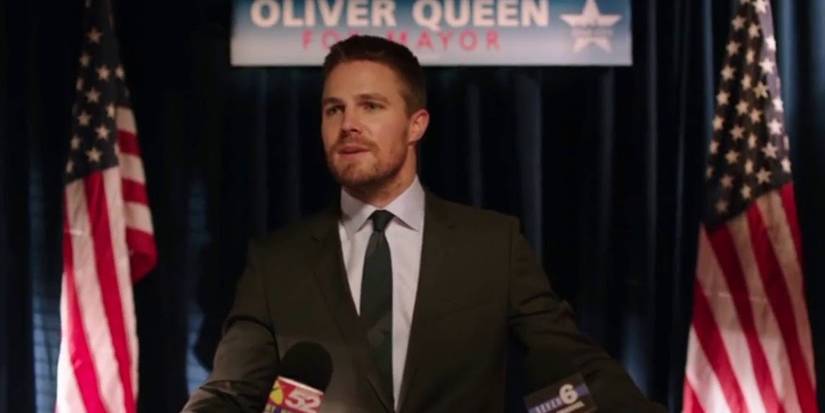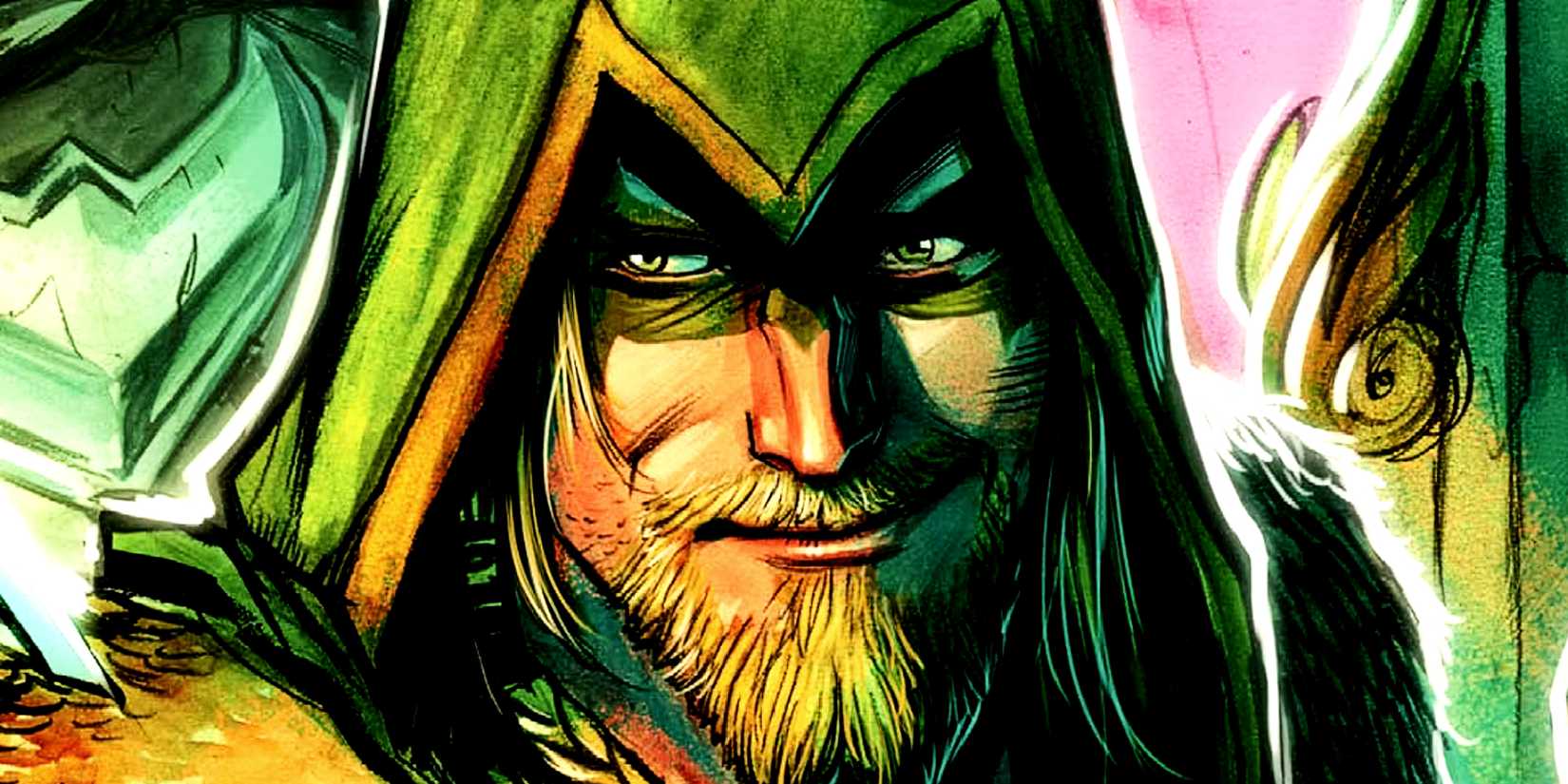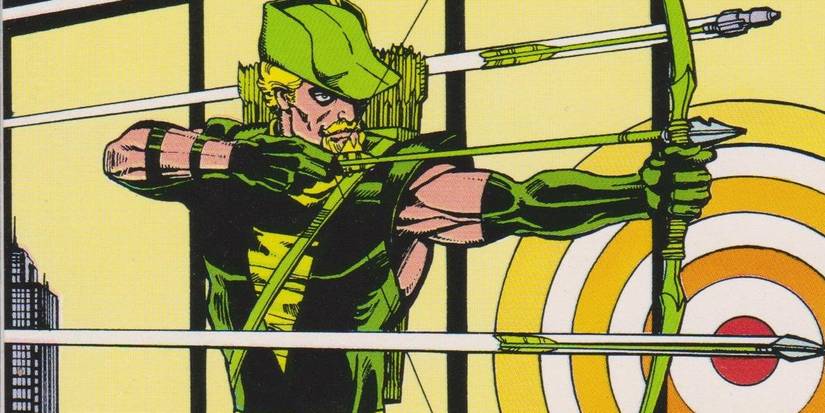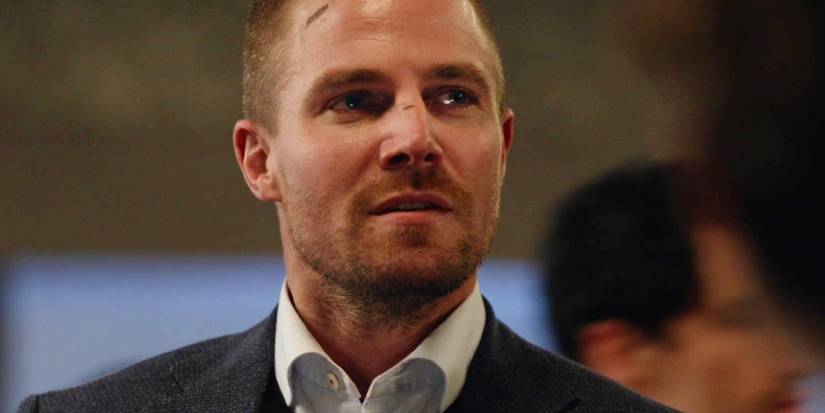Oliver Queen is a foundational character to the DC Arrowverse, but the version that appears on-screen rarely resembles the source material. When Arrow debuted in 2013, it was a groundbreaking superhero series that built up a solid fanbase in record time.
The show’s success led to several additional series being made, all based on stories from DC Comics, and often delivering crossover adventures with multiple heroes. The Arrowverse continued expanding and thriving, even when DC’s big screen projects were getting mixed reviews.
However, while the Arrowverse became a beloved and sprawling franchise, adapting comic book storylines and heroes in a variety of ways, the version of Oliver Queen played by Stephen Amell was distinctly different from his comic book counterpart for almost his entire run.
Arrow Season 5 Was The Only Time Oliver Queen Got Political

The comic book character Green Arrow first appeared in comics back in 1941, but the character’s popularity spiked in the 1960s and 1970s when he underwent a drastic transformation. This era saw Oliver Queen become a political activist with liberal views, and ever since, it’s been a defining feature of his stories.
Despite this, Arrow only really saw Oliver get wrapped up in politics when Oliver became the mayor of Star City in Arrow season 5. This storyline is pulled straight from the comics, but his time as mayor is only one small part of Oliver’s story, and the way it plays out in the comics is considerably different to how it plays out in the Arrowverse.
Oliver Queen’s Politics Are One Of The Defining Traits Of The Character

Close up of Oliver Queen, a.k.a. Green Arrow, with a subtle smirk on his face.
In the comics, Queen Industries, the company owned by Queen’s family and from which he inherits much of his wealth, made a large deal of money manufacturing weapons, similar to Tony Stark from Marvel.
Oliver discovers the impact this has on the real world, and chooses to sell the company out of moral obligation to avoid participating in bloodshed and war in this way. Meanwhile, in Arrow, Oliver loses his company when it’s taken over by the daughter of Slade Wilson.
In both the show and the comics, Oliver continues to have access to wealth, but the comic book version of the character dedicates much of his resources and attention to activism, while Arrow’s version is utterly obsessed with his vigilante efforts.
When Oliver steps up to become the mayor of Star City in Arrow, it is a rare moment that sees the on-screen hero align with the comics. Oliver wants to create lasting change, and his time in office helps to achieve this.
In this way, the TV version’s time as mayor proves to be more fruitful than the source material, since the comics see Oliver’s run come to an abrupt end. However, the two characters diverge in many other ways throughout the show.
Stephen Amell’s Green Arrow Was Often Very Different From The Comics

Green Arrow Trick Arrows DC Comics
Ultimately, the Oliver Queen that appears in the Arrowverse appears to be a looser adaptation of the character from the comics. From minor details like the lack of a goatee, to the absence of any sense of humor, and onto larger details like the character’s political leanings, this Green Arrow is a whole other person.
While the stories overlap at certain points, with Oliver being trapped on an island and honing his abilities, to eventually becoming the mayor, there are much wider gaps between the motivations and actions of the two characters that make the Arrowverse version stand apart from the original.
This isn’t necessarily a bad thing, and Arrow clearly built up a dedicated fanbase, but it is a considerably different version of the character than previous versions that appear throughout the history of DC Comics.
Arrow’s Mayor Oliver Queen Storyline Was A Big Missed Opportunity

A bloodied Stephen Amell wearing a collared shirt in Arrow season 7
Unfortunately, even when Oliver Queen lined up with the comics in season 5’s mayoral storyline, the resulting story was somewhat underwhelming. Arrow focused on the strains and pressures that Oliver experienced trying to balance his hero life and his public life, but it didn’t result in real change.
Oliver may have wanted to make the city a better place, and eradicate systemic injustice and wrongdoing, but after a short run in office, it didn’t seem like Star City was any better than before. Even if Oliver was hitting a wall enacting change, the show could have used this time to focus on Oliver’s political persuasions.
Even if Arrow’s version of Oliver held different views to the source material, this was the opportunity to unpack it. Unfortunately, Arrow continued to follow the same path the show had been exploring for the past four seasons: Oliver’s obsession with avenging the city as a masked vigilante.
The Arrowverse did do a much better job of adapting accurate versions of other heroes, but Oliver Queen’s depiction on the small screen seems to have missed the mark in some ways. It still made the character considerably more popular among modern-day viewers, but they lost a spark of creativity.
And with all of that said, Stephen Amell’s version of the Green Arrow is now the defining version of the hero for a whole new generation. It’s not bad, it’s just different, but it’s worth noting that the version seen in the Arrowverse is distinct from what came before.

